Take your binoculars and examine them. You’ll see numbers coming up on your notice. Ask your best pal who might be an ardent binocular user anything about the devices.
The most frequent words you would hear from him/her are likely to be a collection of numbers, both familiar and vague. What do the Numbers on binoculars mean actually?
That’s a BIG question, but worry not!
Today, We’re going to make the numbers easy, intelligible, and practicable. We’ll also explore what do the numbers mean on binoculars, and how to choose the right pair for you.
You will be able to choose the best binoculars whether for the purpose of hunting or night vision after understanding the value of these numbers.
What Do the Numbers on Binoculars Mean?
As I’ve mentioned earlier, binocular numbers are the indications that make a particular unit more attractive, noteworthy, and useful than others. Here’s an example:
You will always find a series name with two numbers, such as 10×50, 10×42, 8×42, or 8×25. These numbers relay the magnification, and the objective lens size respectively.
Bow how do the numbers work on binoculars? What do the 2 numbers on binoculars mean actually? Let’s find out!
The first number in the sequence usually indicates how much the binoculars will magnify the target for you. If 10 is the first number, your unit magnifies an object 10 times its original size. The second number refers to the diameter of the lens in millimeters.
The lens size is critical as it indicates how much light the lens may assemble in a given situation.
Available numbers on binoculars
Congratulations! Now you have a good answer to the question. “what do the numbers mean on binoculars”.
However, it’s time to dive deeper. Sometimes, a pair of binoculars also hold a wide range of information alongside magnification.
In this article, I’ll discuss the following numbers.
- Magnification
- Field of view
- Aperture
- Exit pupil size
- Eye relief
- Prism systems
- Coatings
All these properties bear numeric significance for hunters and birdwatchers, surveillance professionals, foresters, archers, and everyone who uses binoculars.
Magnification
It is needless to say that the process of enlarging the apparent size of an object is known to us as magnification.
However, the process amplifies the apparent size, not the physical size.
The ocular lenses usually carry out the magnification process of the binoculars. When you use binoculars, ocular lenses are the closest to the eyes.
You already know that the first number in the designation refers to the intensity of the magnification.
For example, if you got numbers like 10×40, and 8×42; that means the object you want to see through binoculars will appear 10 or 8 times closer as opposed to the naked eye.
When you see multiple numbers before the ‘x’ sign, such as 12-36×70, you have got a zoom binocular.
The magnification of your binoculars is variable from the first number to the second number.
For the 12-36×70, you can see the object 12x to 36x bigger by just moving the zoom lever.
Some binoculars may also show the numbers like 25/40×100. The sign ‘/’ between the first two numbers means this is not a zoom binocular.
However, it can use several fixed-power eyepieces to obtain different levels of magnification. The 25/40×100 binocular has eyepieces on rotating turrets.
It gives you the opportunity to switch back and forth between 25x and 40x magnification. Understanding the right magnification settings will help you choose compact, high-end binoculars. Here’s what to keep in mind:
- With the objects appearing closer, the field of vision will diminish.
- For bird watching and sport viewing binoculars with a magnification of 7 or 8 will be great.
- Smaller ocular lenses are also good for these activities as smaller binoculars are easier and steadier to hold.
Field of View
This specific aspect is expressed using either degrees or meters visible at a 1000m range. Deer hunters long for a wide field of view, so they get a better chance to spot the target.
Binoculars with a narrow field of view require the user to pan the device around more, an action that would cost the hunter the spotting of the animal.
So, a proper balance between field of view and magnification is all you want.
Aperture (Lens Size)
The second number after the ‘x’ sign refers to the size of the objective lenses’ diameter in millimeters.
For the lens, size does matter. The larger lenses will admit more lights for clear viewing. The term aperture indicates the ‘opening of the lens.’
To measure the lens aperture size, we use the term ‘f-stops.’
Moving to start with one f-stop and then onto the next will double or separate into equal parts the opening of the objective lens.
At the point when the lens measure is multiplied, multiple times the measure of light will enter the binoculars.
The size of the objective lenses also influences the physical size of a couple of binoculars. The large objective lenses will make the casing of the binoculars larger.
However, makers use different materials for the casing, but the weight of the binoculars will definitely increase with the aperture number.
If you’re using a handheld binocular, consider the following points.
- Large-sized apertures are useful for bird watching.
- Thermal binoculars are also available when there is no light.
- Buy a sturdy tripod with larger binoculars.
Exit Pupil Size
Divide the aperture by the magnification, and you will get the exit pupil. The number will be approximately between 4 and 8.
The exit pupil is usually the diameter of the shaft of light coming to your eyes from the binocular eyepieces.
The exit pupil refers that how well the binoculars will perform in a low-light conditions.
The ideal exit pupil size of your binoculars has to be equal to or slightly smaller than the pupil of your eyes.
Because of this, the binocular will deliver the maximum amount of light and bring the brightest images for its aperture.
The more extensive the shaft of light, the more splendid the picture will be on the grounds that the light is hitting a greater amount of our retina.
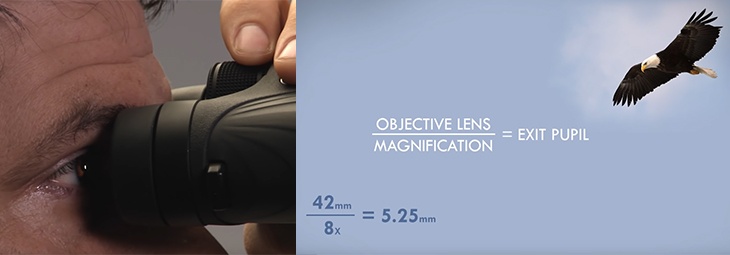
A binocular that has too high amplification for its objective size usually delivers a darker view because the smaller shaft of light is achieving a little measure of the retina.
Keep the following information in mind.
- In the daytime, the pupil of the eyes will contract to the size of 2-4 mm while it will be 7 mm at night.
- The number will vary through the ages.
- Exit pupil size will not be an issue for sunlight, but you need to use a larger 6-7 mm exit pupil for dusk or night.
Eye Relief
Eye relief or the ‘exit pupil distance is the distance that your eyes have to be from the ocular lenses. It will ensure the optimum performance of the binoculars.
It will also indicate the standard distance of holding the binoculars from your eyes to get a clear view of the entire apparent view.
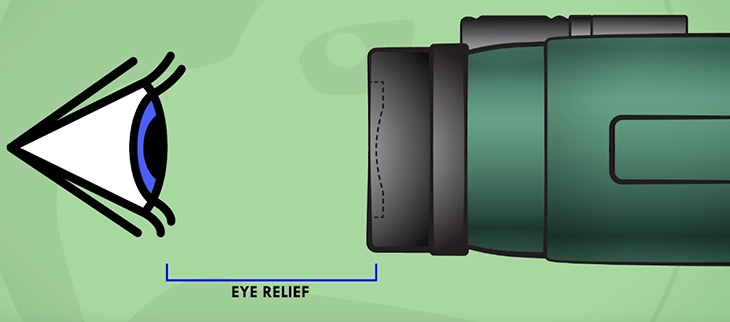
- The eye relief range for the standard binoculars is from a few millimeters to 25 millimeters or more.
- The longer focal length of an eyepiece will ensure greater eye relief.
- Long eye relief will be useful for eyeglass wearers.
Prism Systems
All the binoculars have built-in prism systems that serve as the mirror. The prism system of binoculars consists of two prisms.
They are placed either one in front of another or which is called the roof prism system or the two prisms can be placed in a 90-degree angle position.
This is called the Porro arrangement of a prism. The first prism creates a reverse image of the target object. The second prism then reverts the image to its original position.
You should see through two eyes as two eyes are better than one.
Prisms in a binocular are of two kinds. There are roof prisms and Porro prisms.
Without going into technical detail, I can only say that binoculars with roof arrangement of prisms are good for bird watching.
However, they are a bit poor performer for astronomical uses.
Two types of glasses are used to make prisms. One is a combination of boron and silicate flint glass and the other is glass made with barium.
Barium glass is also known as Bak 4. These glasses have high refractive power. They offer clear and crisp images. That’s why users prefer BaK-4 over the standard BK-7.
Read the points below to check the BK-7 or BaK-4 prism on your own, you can do the following.
- Take the binocular and Direct it to a light-emitting source; look at the eyepiece and it will tell you about the prism glass.
- The exit pupil of the BaK-4 glass will be curbed, and it will also be evenly illuminated.
- Glass made with born and silicate which is known as BK-7 may have a grey, square-shaped circumference in the exit pupil.
Coatings explained
Likely the essential factor in the quality of binoculars is the coating procedure. This inconspicuous, inward component decides the measure of light that enters the objective lenses.
Proper coating limits the amount of light that is misled by being reflected far from the binoculars.
The procedure of compelling coating has been improved. However, it is moderate, repetitive, and exorbitant to the producer.
Setting aside the opportunity to comprehend the quality of coating will enable you to get the best binoculars for your cash.
We should take a look at the varieties in the coating that decide the quality of various binoculars.
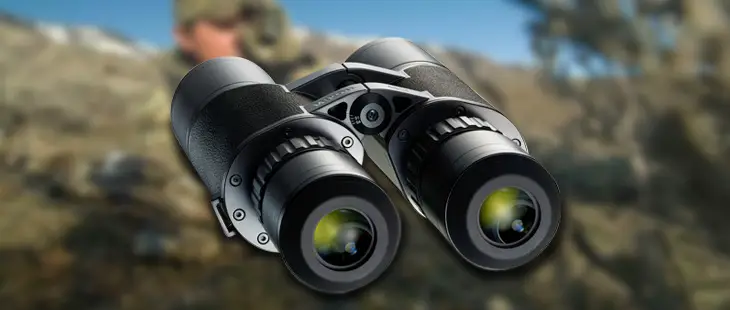
At least eight lenses are in a couple of binoculars. A portion of these is reinforced together.
For those that are not, there is an air-to-lens obstruction that the light should cross to infiltrate the lens and enter the binoculars.
A typical binocular currently has around 20 such hindrances. So, it is obvious why coatings are essential to satisfactory light infiltration.
Different types of coatings
- Single-layer coating: There will be a single layer of coating on at least one lens surface.
- Fully coated lens: They have a single-layer coating on every air-to-glass overlay.
- Multi-coating: Multi-coating gives the lens a higher level of light transmission and image contrast.
- Fully multi-coating: In this feature, all internal air-to-glass surfaces are coated.
- Broadband multi-coating: This is the highest quality of multi-coating. It has less of an increase in reflectivity at the ends of the range.
One interesting thing to note!
After talking to countless people (from our community of outdoorsmen), I observed that some hold this notion about binoculars: “Binoculars numbers are all about numbers.”
Technically, they are right. But, practically, they’re more than mere digits, and the numbers are actually indicative of the overall potentiality of a unit.
Thanks for reading this far. Through this guide, we’ve tried to provide a simplified overview of binocular magnification. We’ve explored the answers to questions like, “what do the different numbers on binoculars mean, and how to explain the numbers”.
Hopefully, this post will answer all the information you seek. Thanks for reading this far.
FAQs
What Is a Good Binocular Number?
A pair of binoculars with a magnification range of 6-10X is adequate for most of us. However, if you need to rely on your vision over long distances (like birdwatching and tracking) without letting your handshaking become an issue, 8-10X magnification will be perfect for you.
Here’s a chart showing the best magnification numbers for different tasks:
| Condition of the Visibility | Ideal Magnification Range |
| Low Light | 7×50, 8×42, 10×50 |
| Bird Watching | 10×42, 10×50, 12×50 |
| Hunting | 10x, 12x, 16x |
| Boating | 7×50, 7×42, 8×42, 10×42 |
Is the Bigger the Number the Better for Binoculars?
No, Not always. Bigger binoculars tend to have wider and heavier lenses, so carrying and using bigger binoculars isn’t always the best decision. You should pick your binoculars according to your specific needs.
Are 10×50 Binoculars Stronger Than 10×42?
Yes. Here, both binoculars feature 10X magnification. However, the first one offers a slightly bigger lens. The bigger lens allows more light to enter your eye, providing a sharper and crisper image than the 10X42 produces.
How to Read Binocular Numbers?
The first number here represents the magnification power of the binoculars. 10X indicated that the pair have the power to provide 10 times magnification, meaning you’ll be able to observe your target as if it’s 10 times closer than it actually is. The latter number, 50, represents the diameter of the objective lens in mm. So, 10X50 means that the pair has a 500 mm wide lens that’s capable of 10 times more magnification than normal.

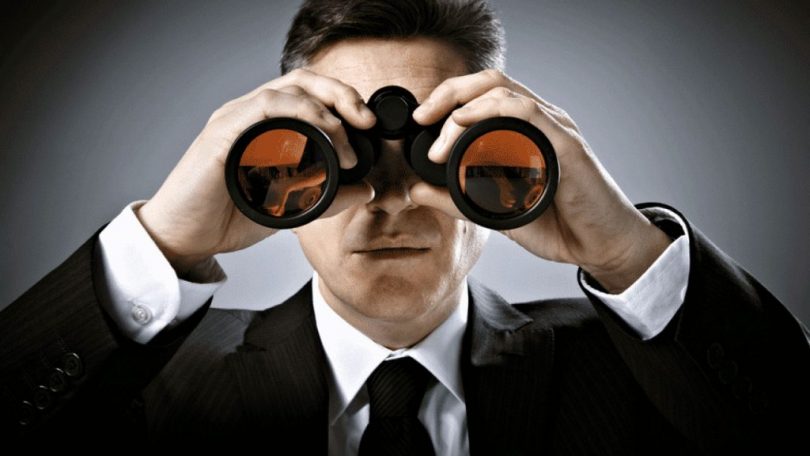

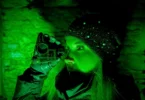

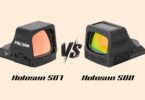
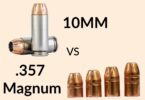


Leave a Comment